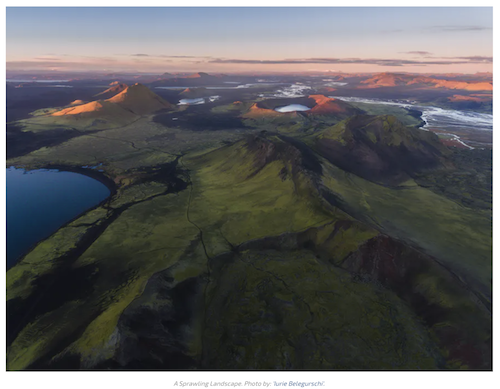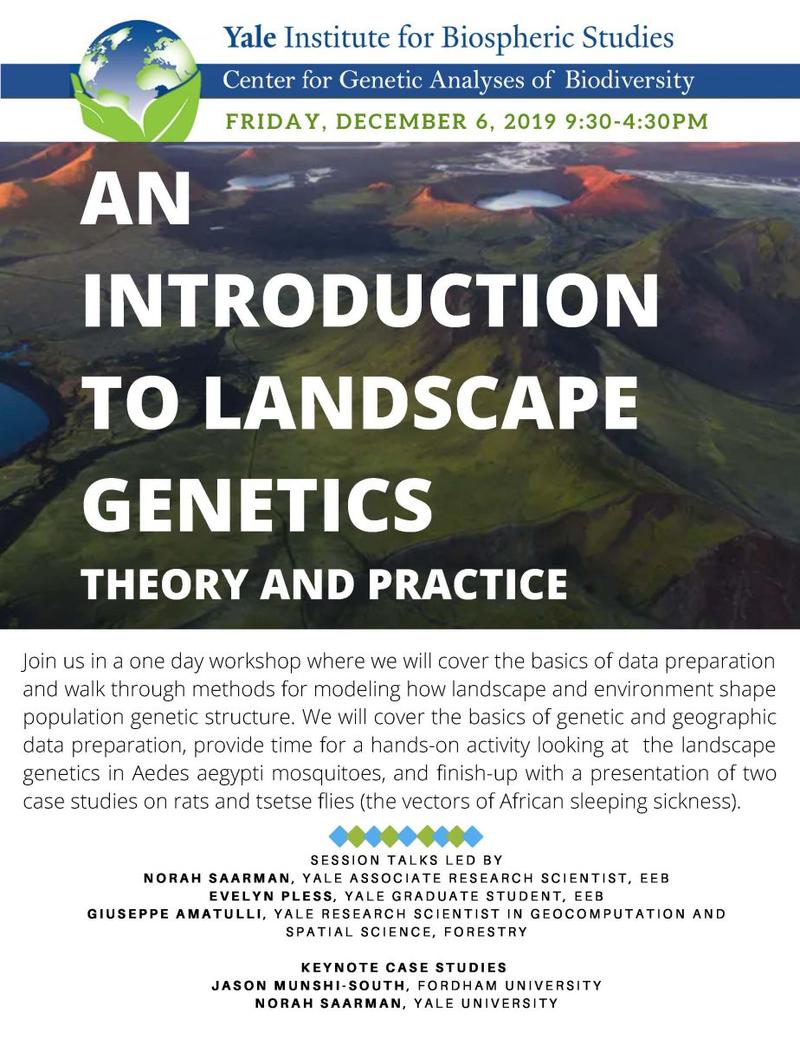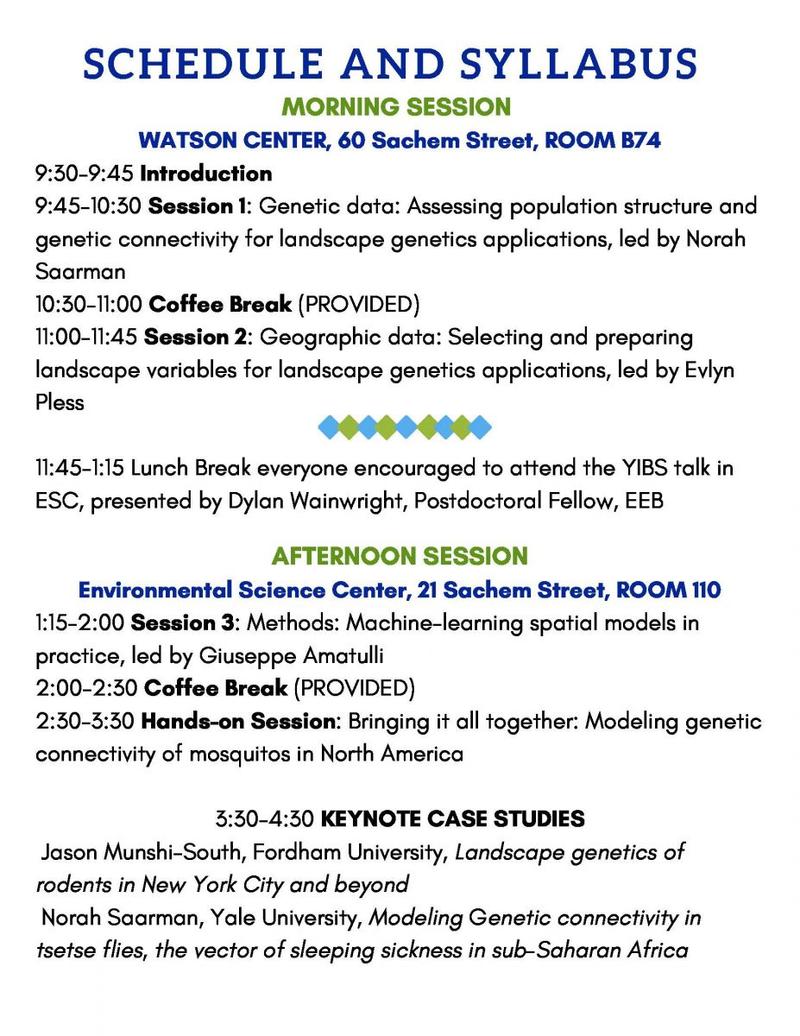
Landscape genetics integrates geographic and genetic data to understand the effects of landscape variables on gene flow and genetic population structure. In the first two sections of the workshop we will cover the basics of preparing genetic and geographic data for landscape genetic analyses. In the third section we will highlight one method, machine learning, to combine these data in order to map landscape connectivity and determine what variables predict connectivity. A fourth hands-on section will bring all of these elements together with an example from the instructors’ recent work on mosquito genetic connectivity in North America. Finally, we will wrap up with presentations of case studies. Jason Munshi-South will present his work on the landscape genetics of rodents in New York City and Beyond, and Norah Saarman will present her work on modeling genetic connectivity in tsetse flies, the vector of sleeping sickness in sub-Saharan Africa.

